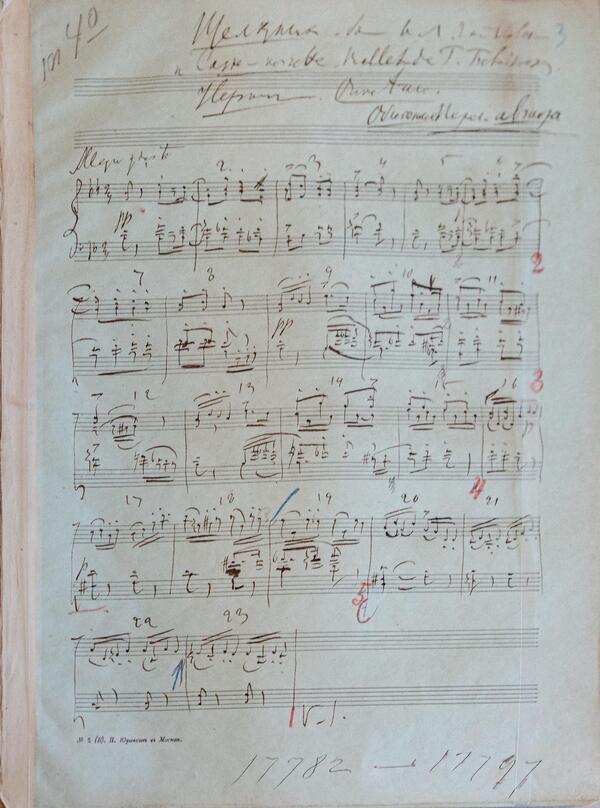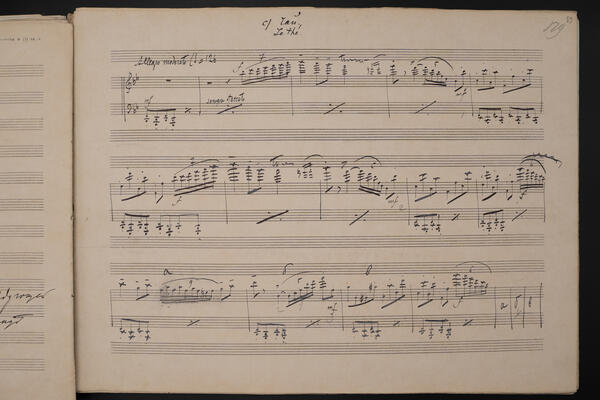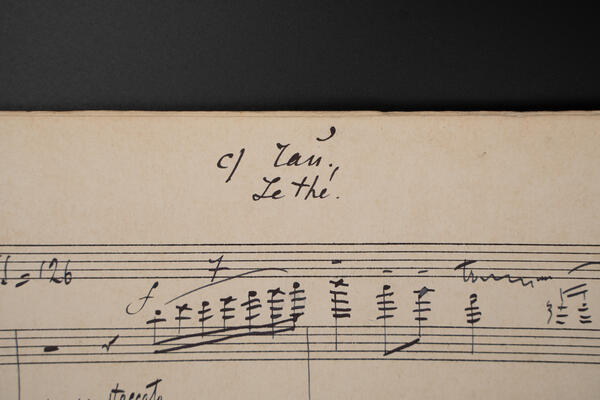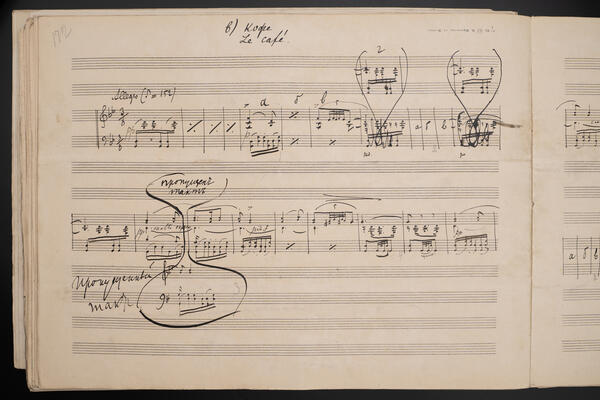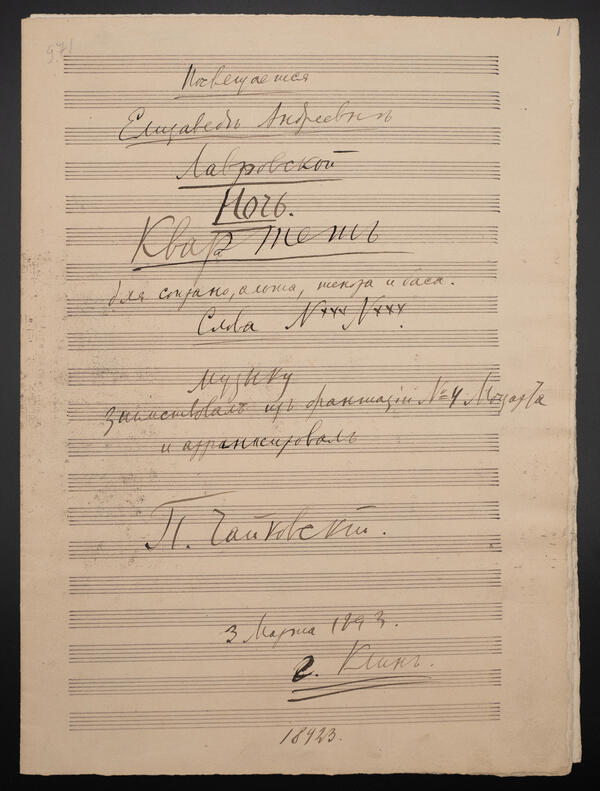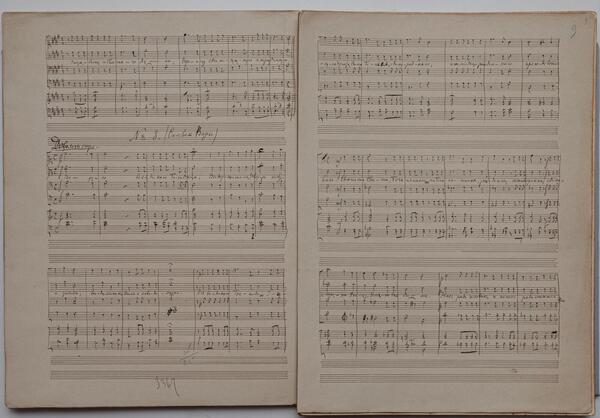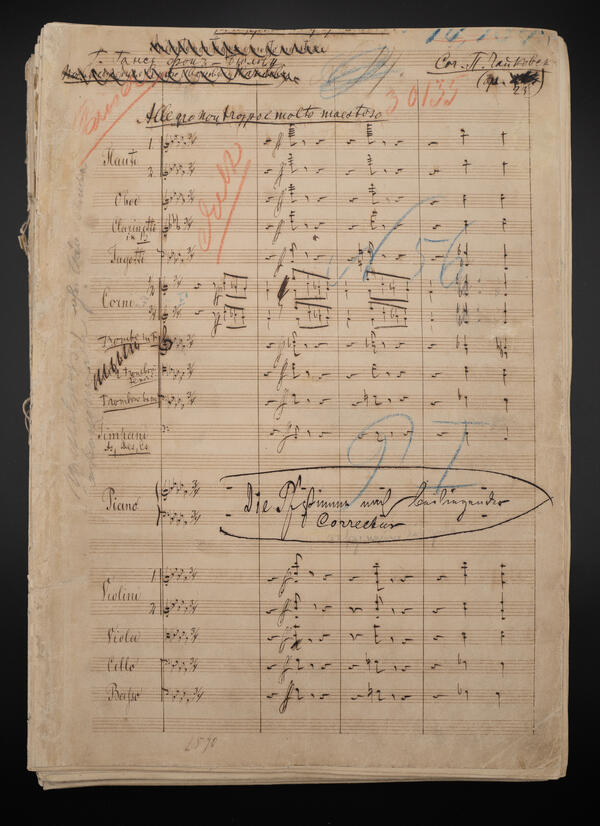The “fairy ballet” to the music by Pyotr Ilyich Tchaikovsky has two acts and three scenes. The libretto by Marius Petipa was based on Ernst Theodor Amadeus Hoffmann’s story “The Nutcracker and the Mouse King”.
The presented autograph is a simplified arrangement for piano two hands. The manuscript arrangement demonstrates one of the basic principles of Tchaikovsky’s work as a composer — to save one’s strength and avoid purely mechanical labor. At first, at his request, Sergey Taneyev arranged the ballet for piano. Tchaikovsky found that version unnecessarily difficult and decided to create his own. However, while working on it, he looked at Taneyev’s arrangement, a copy of which he glued to the sheet music.
While working on the ballet’s instrumentation, the composer wrote to his friend Peter Jurgenson that he needed children’s musical instruments from the symphonies of Haydn and Romberg. Tchaikovsky’s manuscript of “The Nutcracker” contains interesting remarks related to playing children’s instruments, such as pipes, drums, and rattles. In “The Nutcracker”, the composer opted to use a celesta — a musical instrument, which he ordered from Paris.
“The Nutcracker” was premiered in December 1892 on the stage of the Mariinsky Theater on the same evening as the first performance of the opera “Iolanta”. The idea to present a two-act ballet and a one-act opera belonged to the director of the Imperial Theaters Ivan Vsevolozhsky, who commissioned Tchaikovsky to create both of these works.
The roles of Clara and Fritz were performed by children, students of the St. Petersburg Imperial Theater School: twelve-year-old Stanislava Belinskaya as Clara (Hoffman’s heroine is called Marie, and Clara is her doll), and seventeen-year-old Sergei Legat as the Nutcracker Prince. In the scenes with many dancers, the roles of soldiers were given to pupils of the Finnish Life Guards Regiment.
60 ballerinas were engaged in the “Waltz of Snowflakes”. The eight soloists and the corps de ballet were dressed in identical white tutus dotted with lumps of fluff. Their heads were decorated with star-like crowns with white flakes. Light, smooth movements merged not only with the music, but also with the chorus of children’s voices. According to Tchaikovsky’s plan, the voices of angels were to be heard at that moment.
In the libretto, this scene was described as follows:
